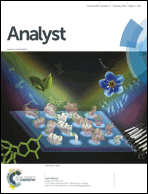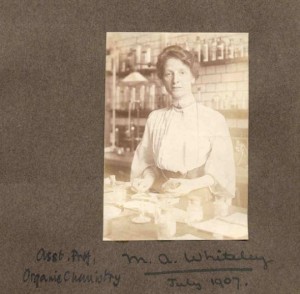During the months April – June 2014, the most downloaded Analyst articles were:
Single molecule sensing by nanopores and nanopore devices
Li-Qun Gu and Ji Wook Shim
Analyst, 2010, 135, 441-451
DOI: 10.1039/B907735A
A bioelectronic sensor based on canine olfactory nanovesicle–carbon nanotube hybrid structures for the fast assessment of food quality
Juhun Park, Jong Hyun Lim, Hye Jun Jin, Seon Namgung, Sang Hun Lee, Tai Hyun Park and Seunghun Hong
Analyst, 2012, 137, 3249-3254
DOI: 10.1039/C2AN16274A
Measurement of biomarker proteins for point-of-care early detection and monitoring of cancer
James F. Rusling, Challa V. Kumar, J. Silvio Gutkind and Vyomesh Patel
Analyst, 2010, 135, 2496-2511
DOI: 10.1039/C0AN00204F
Upconversion nanoparticles in biological labeling, imaging, and therapy
Feng Wang, Debapriya Banerjee, Yongsheng Liu, Xueyuan Chen and Xiaogang Liu
Analyst, 2010, 135, 1839-1854
DOI: 10.1039/C0AN00144A
Recent advances in sample preparation techniques to overcome difficulties encountered during quantitative analysis of small molecules from biofluids using LC-MS/MS
Caroline Bylda, Roland Thiele, Uwe Kobold and Dietrich A. Volmer
Analyst, 2014, 139, 2265-2276
DOI: 10.1039/C4AN00094C
Aptamer-based biosensors for biomedical diagnostics
Wenhu Zhou, Po-Jung Jimmy Huang, Jinsong Ding and Juewen Liu
Analyst, 2014, 139, 2627-2640
DOI: 10.1039/C4AN00132J
Illuminating disease and enlightening biomedicine: Raman spectroscopy as a diagnostic tool
David I. Ellis, David P. Cowcher, Lorna Ashton, Steve O’Hagan and Royston Goodacre
Analyst, 2013, 138, 3871-3884
DOI: 10.1039/C3AN00698K
Recent advances in electrochemical sensing for hydrogen peroxide: a review
Wei Chen, Shu Cai, Qiong-Qiong Ren, Wei Wen and Yuan-Di Zhao
Analyst, 2012, 137, 49-58
DOI: 10.1039/C1AN15738H
Simultaneous targeted analysis of five active compounds in licorice by ultra-fast liquid chromatography coupled to hybrid linear-ion trap tandem mass spectrometry
Weijun Kong, Jing Wen, Yinhui Yang, Feng Qiu, Ping Sheng and Meihua Yang
Analyst, 2014, 139, 1883-1894
DOI: 10.1039/C3AN02209A
Quantum dots in diagnostics and detection: principles and paradigms
R. Pisanic II, Y. Zhang and T. H. Wang
Analyst,2014, 139, 2968-2981
DOI: 10.1039/C4AN00294F
If you have any comments or thoughts on any of these articles, we welcome you to write these in the comment box below.
Do you fancy submitting an article to Analyst? Why not submit to us here today or alternatively email us with your suggestions!

















 We are delighted to announce that our latest Impact Factor* is 3.906!
We are delighted to announce that our latest Impact Factor* is 3.906!


